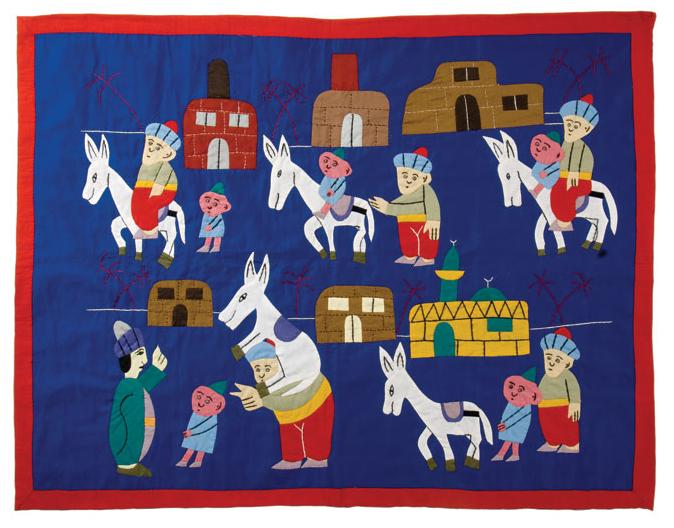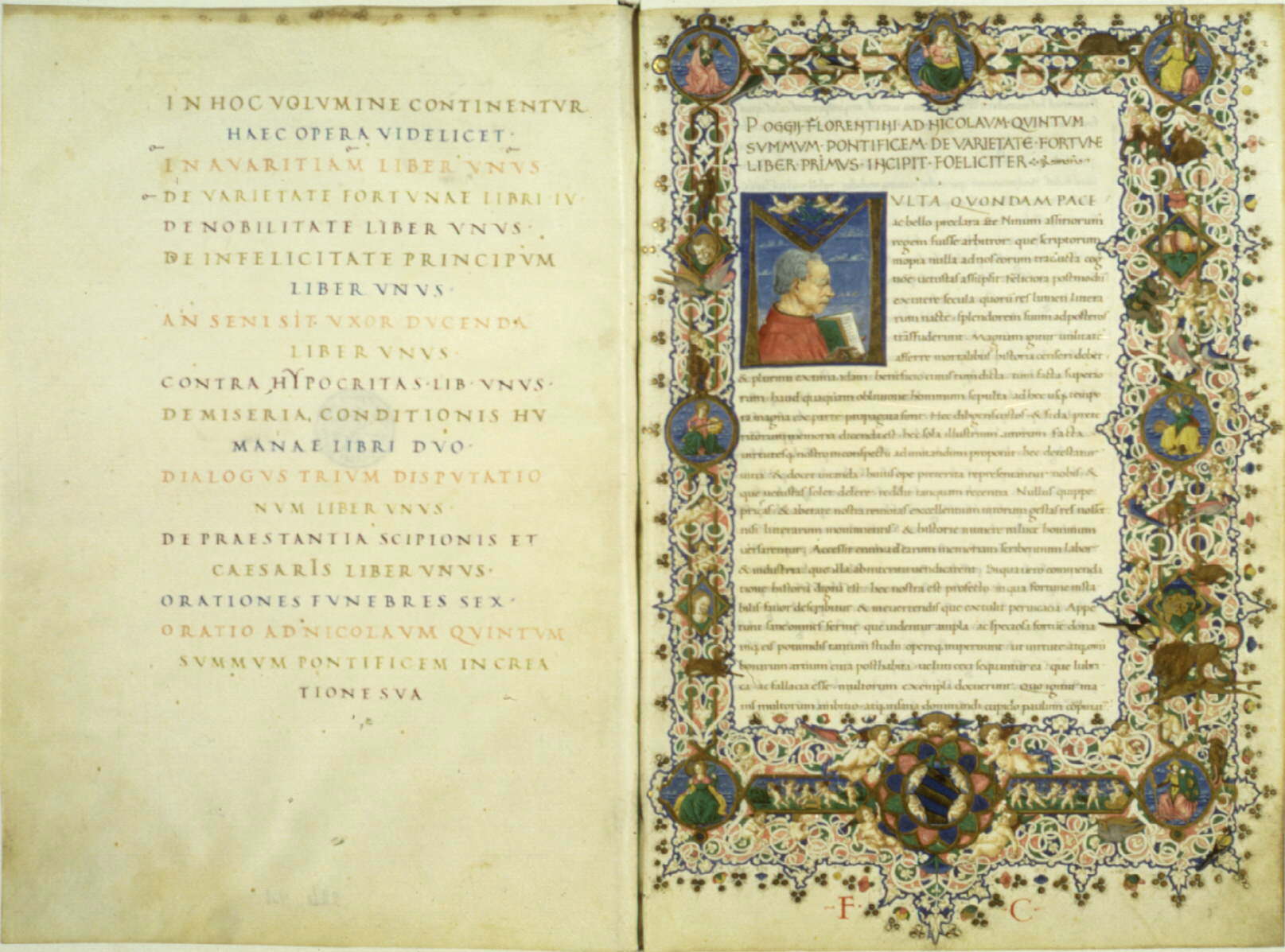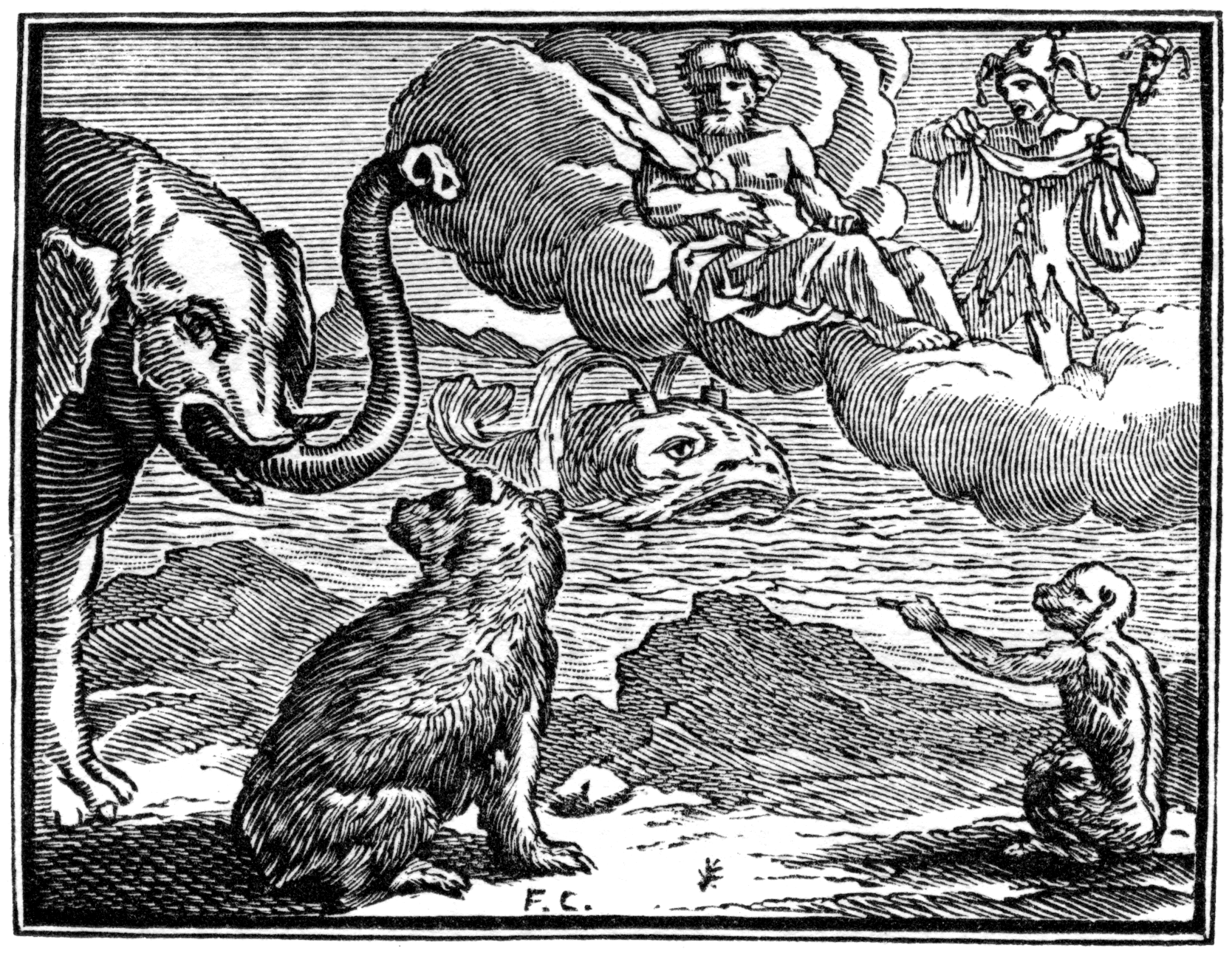|
Shakespeare's Jest Book
The title of Shakespeare's Jest Book has been given to two quite different early Tudor period collections of humorous anecdotes, published within a few years of each other. The first was ''The Hundred Merry Tales'', the only surviving complete edition of which was published in 1526. The other, published about 1530, was titled ''Merry Tales and Quick Answers'' and originally contained 113 stories. An augmented edition of 1564 contained 140. The explanation of the title comes from a reference to one or other collection in William Shakespeare's play ''Much Ado About Nothing'' in which the character Beatrice has been accused 'that I had my good wit out of the 100 Merry Tales' (II.sc.1). By that time it seems that the two works were being confounded with each other. Contents The stories in the 1526 ''Hundred Merry Tales'' are largely set in England, mostly in London or the surrounding area, and contain the stock figures of stupid clergymen, unfaithful wives, and Welshmen, the butt of ... [...More Info...] [...Related Items...] OR: [Wikipedia] [Google] [Baidu] |
Tudor Period
The Tudor period occurred between 1485 and 1603 in History of England, England and Wales and includes the Elizabethan period during the reign of Elizabeth I until 1603. The Tudor period coincides with the dynasty of the House of Tudor in England that began with the reign of Henry VII of England, Henry VII (b. 1457, r. 14851509). Historian John Guy (historian), John Guy (1988) argued that "England was economically healthier, more expansive, and more optimistic under the Tudors" than at any time since the Roman occupation. Population and economy Following the Black Death and the agricultural depression of the late 15th century, the population began to increase. In 1520, it was around 2.3 million. By 1600 it had doubled to 4 million. The growing population stimulated economic growth, accelerated the commercialisation of agriculture, increased the production and export of wool, encouraged trade, and promoted the growth of London. The high wages and abundance of available land seen ... [...More Info...] [...Related Items...] OR: [Wikipedia] [Google] [Baidu] |
The Miller, His Son And The Donkey
The miller, his son and the donkey is a widely dispersed fable, number 721 in the Perry Index and number 1215 in the Aarne–Thompson classification systems of folklore narratives. Though it may have ancient analogues, the earliest extant version is in the work of the 13th-century Arab writer Ibn Said. There are many eastern versions of the tale and in Europe it was included in a number of Mediaeval collections. Since then it has been frequently included in collections of Aesop's fables as well as the influential ''Fables'' of Jean de la Fontaine. The fable In this fable a man and his son are accompanied by their donkey and meet constant criticism from passers-by of the way it is used or treated by them. The story's purpose is to show that everyone has their own opinion and there is no way one can satisfy all. There are four or five different elements to the story that are ordered differently according to version. When both walk beside the donkey they are criticised for not ridi ... [...More Info...] [...Related Items...] OR: [Wikipedia] [Google] [Baidu] |
Comedy Books
Comedy is a genre of fiction that consists of discourses or works intended to be humor Humour (English in the Commonwealth of Nations, Commonwealth English) or humor (American English) is the tendency of experiences to provoke laughter and provide amusement. The term derives from the humorism, humoral medicine of the ancient Gre ...ous or amusing by inducing laughter, especially in theatre, film, stand-up comedy, television, radio, books, Entertainment, or any other entertainment medium. The term originated in ancient Greece: in Athenian democracy, the public opinion of voters was influenced by political satire performed by comic poets in Ancient Greek theatre, theaters. The theatrical genre of Greek comedy can be described as a dramatic performance pitting two groups, ages, genders, or societies against each other in an amusing ''agon'' or conflict. Northrop Frye depicted these two opposing sides as a "Society of Youth" and a "Society of the Old". A revised view characterize ... [...More Info...] [...Related Items...] OR: [Wikipedia] [Google] [Baidu] |
English Books
English usually refers to: * English language * English people English may also refer to: Peoples, culture, and language * ''English'', an adjective for something of, from, or related to England ** English national identity, an identity and common culture ** English language in England, a variant of the English language spoken in England * English languages (other) * English studies, the study of English language and literature * ''English'', an Amish term for non-Amish, regardless of ethnicity Individuals * English (surname), a list of notable people with the surname ''English'' * People with the given name ** English McConnell (1882–1928), Irish footballer ** English Fisher (1928–2011), American boxing coach ** English Gardner (b. 1992), American track and field sprinter Places United States * English, Indiana, a town * English, Kentucky, an unincorporated community * English, Brazoria County, Texas, an unincorporated community * Englis ... [...More Info...] [...Related Items...] OR: [Wikipedia] [Google] [Baidu] |
Gian Francesco Poggio Bracciolini
Gian Francesco Poggio Bracciolini (11 February 1380 – 30 October 1459), usually referred to simply as Poggio Bracciolini, was an Italian scholar and an early Renaissance humanist. He was responsible for rediscovering and recovering many classical Latin manuscripts, mostly decaying and forgotten in German, Swiss, and French monastic libraries. His most celebrated finds are ''De rerum natura'', the only surviving work by Lucretius, ''De architectura'' by Vitruvius, lost orations by Cicero such as '' Pro Sexto Roscio'', Quintilian's ''Institutio Oratoria'', Statius' ''Silvae'', and Silius Italicus's ''Punica'', as well as works by several minor authors such as Frontinus' ''De aquaeductu'', Ammianus Marcellinus’ ''Res Gestae'' (''Rerum gestarum Libri XXXI''), Nonius Marcellus, Probus, Flavius Caper, and Eutyches. Birth and education Poggio di Guccio (the surname Bracciolini added during his career) was born near Arezzo in Tuscany, in the village of Terranuova, which in 1862 wa ... [...More Info...] [...Related Items...] OR: [Wikipedia] [Google] [Baidu] |
Erasmus
Desiderius Erasmus Roterodamus (; ; English: Erasmus of Rotterdam or Erasmus;''Erasmus'' was his baptismal name, given after St. Erasmus of Formiae. ''Desiderius'' was an adopted additional name, which he used from 1496. The ''Roterodamus'' was a scholarly name meaning "from Rotterdam", though the Latin genitive would be . 28 October 1466 – 12 July 1536) was a Dutch philosopher and Catholic theologian who is considered one of the greatest scholars of the northern Renaissance.Gleason, John B. "The Birth Dates of John Colet and Erasmus of Rotterdam: Fresh Documentary Evidence", Renaissance Quarterly, The University of Chicago Press on behalf of the Renaissance Society of America, Vol. 32, No. 1 (Spring, 1979), pp. 73–76www.jstor.org/ref> As a Catholic priest, he was an important figure in classical scholarship who wrote in a pure Latin style. Among humanists he was given the sobriquet "Prince of the Humanists", and has been called "the crowning glory of the Christian humanists ... [...More Info...] [...Related Items...] OR: [Wikipedia] [Google] [Baidu] |
Laurentius Abstemius
Laurentius Abstemius (c. 1440–1508) was an Italian writer and professor of philology, born at Macerata in Ancona. His learned name plays on his family name of Bevilaqua (Drinkwater), and he was also known by the Italian name Lorenzo Astemio. A Neo-Latin writer of considerable talents at the time of the Humanist revival of letters, his first published works appeared in the 1470s and were distinguished by minute scholarship. During that decade he moved to Urbino and became ducal librarian, although he was to move between there and other parts of Italy thereafter as a teacher. The work for which he is principally remembered now is ''Hecatomythium'' (1495), a collection of a hundred fables written in Latin and largely of his own invention. However, the inclusion together with this work of the thirty-three Aesopic fables translated from the Greek by Lorenzo Valla gave the impression that his own work was of the same kind. Several of the fables of Abstemius, it is true, relate to Ae ... [...More Info...] [...Related Items...] OR: [Wikipedia] [Google] [Baidu] |
La Fontaine's Fables
Jean de La Fontaine collected fables from a wide variety of sources, both Western and Eastern, and adapted them into French free verse. They were issued under the general title of Fables in several volumes from 1668 to 1694 and are considered classics of French literature. Humorous, nuanced and ironical, they were originally aimed at adults but then entered the educational system and were required learning for school children. Composition history Divided into 12 books, there are 239 of the ''Fables'', varying in length from a few lines to some hundred, those written later being as a rule longer than those written earlier. The first collection of ''Fables Choisies'' had appeared March 31, 1668, dividing 124 fables into six books over its two volumes. They were dedicated to ''"Monseigneur"'' Louis, ''le Grand Dauphin'', the six-year-old son of Louis XIV of France and his queen consort Maria Theresa of Spain. By this time, La Fontaine was 47 and known to readers chiefly as the aut ... [...More Info...] [...Related Items...] OR: [Wikipedia] [Google] [Baidu] |
The Young Widow
The Young Widow is a fable of Italian origin, made famous by being included in La Fontaine's Fables (VI.21). Originally a cynical attack on female inconstancy, later treatments were more thoughtful. The Fable The fable originally appeared in Laurentius Abstemius' collection of humorous fables, the ''Hecatomythium'' (1492). Soon afterwards a close translation appeared in the English jest book Merry Tales and Quick Answers (c.1530), but in general the trend among later fabulists has been to embroider upon the rather threadbare narration of Abstemius. La Fontaine softens the sarcasm by making the change of attitude less immediate in his treatment of the story while Charles Denis in his 1754 translation of La Fontaine lengthens the period further and explains the change as simply the effect of time. La Fontaine's delicately ironical interpretation of the fable is reflected in later artistic treatments, such as Lambron Des Piltières' odd mixture of the Classical and the contemp ... [...More Info...] [...Related Items...] OR: [Wikipedia] [Google] [Baidu] |
The Drowned Woman And Her Husband
The drowned woman and her husband is a story found in Mediaeval jest-books that entered the fable tradition in the 16th century. It was occasionally included in collections of Aesop's Fables but never became established as such and has no number in the Perry Index. Folk variants in which a contrary wife is sought upstream by her husband after she drowns are catalogued under the Aarne-Thompson classification system as type 1365A. The story One of the earliest appearances of the story is in the 12th century, when it was included in Marie de France's rhymed fables, the Ysopet, under the title "The man who had a contrary wife" (tale 96). Its most concise telling is in Poggio Bracciolini's ''Facetiae'' (1450), where it is titled "The man who searched in the river for his dead wife": :A man, whose wife had drowned in a stream, went up the river against the current to look for the body. A peasant who saw him marvelled greatly at this, and advised him to follow the flow of the current. "In t ... [...More Info...] [...Related Items...] OR: [Wikipedia] [Google] [Baidu] |
Jest Book
Jest books (or Jestbooks) are collections of jokes and humorous anecdotes in book form – a literary genre which reached its greatest importance in the early modern period. Origins The oldest surviving collection of jokes is the Byzantine '' Philogelos'' from the first millennium. In Western Europe, the medieval fabliau and the Arab/Italian novella built up a large body of humorous tales; but it was only with the ''Facetiae'' of Poggio (1451) that the anecdote first appears rendered down into joke form (with prominent punchline) in an early modern collection. Like his immediate successors Heinrich Bebel and Girolamo Morlini, Poggio translated his folk material from their original language into Latin, the universal European language of the time. From such universal collections, developed the particular vernacular jestbooks of the various European countries in the sixteenth century. Elizabethan jestbooks Tudor and Stuart jest books were typically anonymous collections of indivi ... [...More Info...] [...Related Items...] OR: [Wikipedia] [Google] [Baidu] |
The Old Woman And The Doctor
The Old Woman and the Doctor (or Physician) is a story of Greek origin that was included among Aesop's Fables and later in the 4th century CE joke book, the '' Philogelos''. It is numbered 57 in the Perry Index. A rare fable This fable falls into the category of jokes that were added to the Aesop corpus through the attraction of his name. Because it was largely preserved in Greek sources, it was not noted in the rest of Europe until the Renaissance. One of its first appearances then was in an early Tudor period jest book, '' Merry Tales and Quick Answers'' (c.1530), under the title "Of the olde woman that had sore eyes". The joke involves a woman who asks a surgeon (in this case) to cure her from approaching blindness on the understanding that he would not be paid until she was cured. The surgeon applied salves but stole from the house anything moveable during the course of his visits. Once the cure was completed, the woman refused him payment on the grounds that now her sight was w ... [...More Info...] [...Related Items...] OR: [Wikipedia] [Google] [Baidu] |




.jpg)


